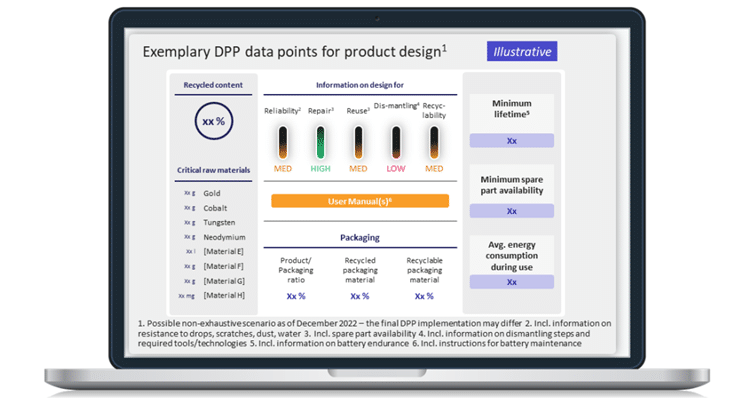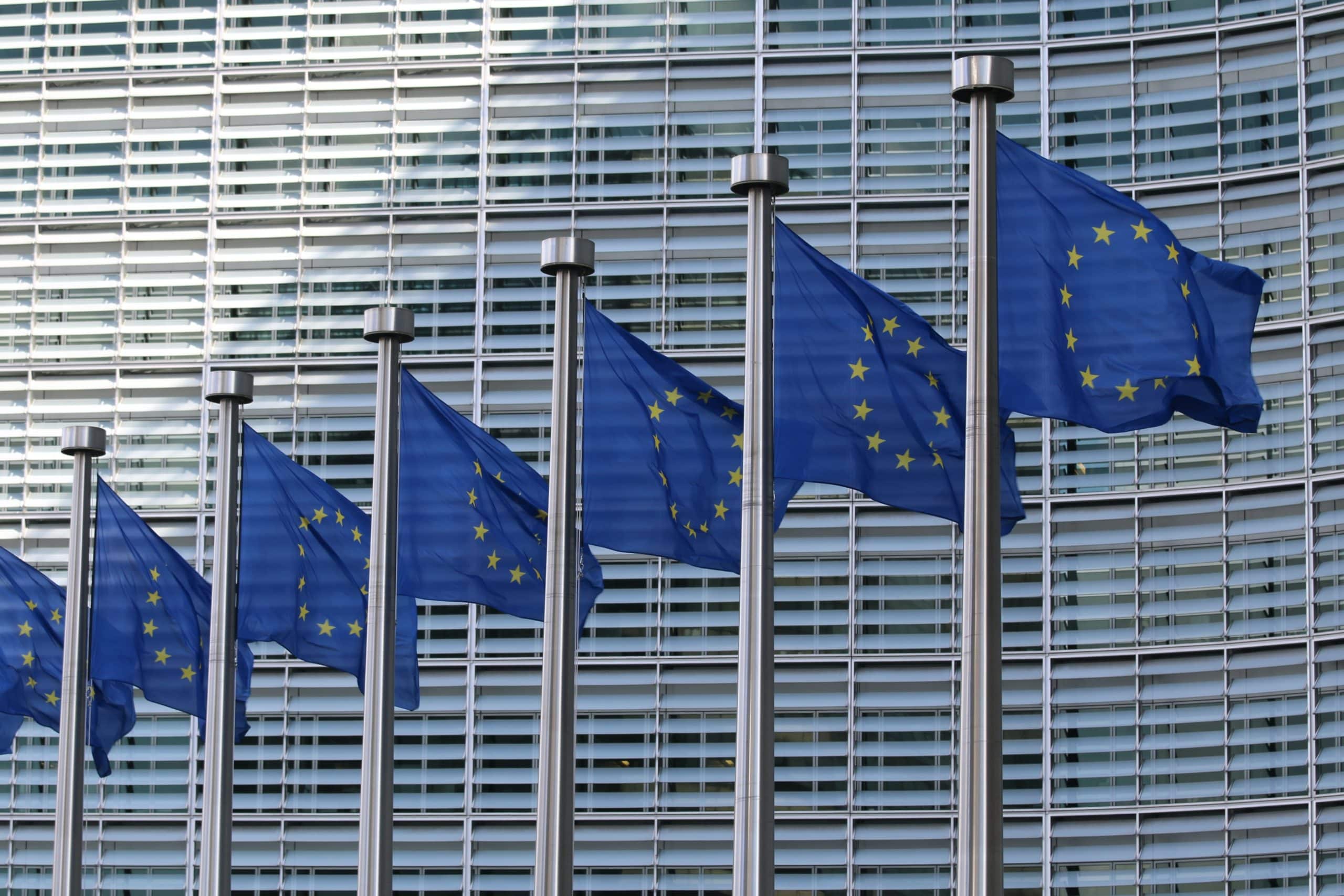
Passport Control: Navigating the EU’s Digital Product Passport
The proposed Digital Product Passport (DPP) from the EU is poised to revolutionise the landscape for businesses and consumers, introducing a new level of transparency and sustainability. It enables consumers to make more informed decisions about their purchases and choose the more sustainable option. However, with implementation deadlines looming, what challenges does this pose for businesses? In this blog, we explore what the DPP is and how businesses need to prepare.
What is the Digital Product Passport?
The DPP is a tool proposed by the European Commission to foster transparency and unlock circularity. Its goal is to share product information across the entire value chain, encompassing data on raw material extraction, production, recycling, and more. This information will be easily accessible by scanning a data carrier, such as a QR code or barcode on the product itself.

The primary objective of the DPP is to enhance the circularity, energy performance, and other environmental sustainability aspects of products. The DPP will include attributes such as durability, reparability, recycled content, or the availability of spare parts for a product.
It is designed to assist consumers and businesses in making informed choices when purchasing products, improving transparency about products’ life cycle impacts on the environment, and, most importantly, facilitating collaboration across the value chain for circular economy initiatives like repair, re-use, and recycling.
Is it that different to Environmental Product Disclosures (EPDs)?
An EPD provides transparent and comparable information about the life-cycle environmental impact of a product, very similar to the intent of the DPP.
While the existing list of metrics and data points that will need to be integrated into the DPP is still being agreed upon, the industry is advocating for DPPs to be built in alignment with or on top of existing frameworks like EPDs. Additional indicators linked to circularity or other data points not already included in an EPD are also being considered.
When will it come into effect?
The European Union is the first large regulator aiming for mandatory DPP implementation across a range of products and industries. This feeds into the wider goal of achieving final approval for the broader Eco-Design for Sustainable Products Regulation (ESPR), of which the DPP is a key component, in 2024.
When agreed upon, it will eventually apply to all products. Currently, frameworks and discussions have begun on 13 key product sectors. The first product category legally required to comply with DPP is batteries, with implementation expected in 2026. Consumer electronics and apparel will likely follow shortly after. By 2030, most industries will be expected to be required to provide DPP disclosures on their products.
Despite what might feel like a long runway to prepare for the DPP, here at Sustainit, we’ve had numerous clients who provide products or services to large corporates already being asked for product-level information as part of contract renewals or tender submissions.
As larger companies seek to improve their performance on scope 3 emissions, they will increasingly ask for first disclosure, then performance from their suppliers. For many companies, these timelines will be compressed, and getting ready to provide such disclosures is not a simple task, with significant amounts of data collection required.

What do businesses need to do?
Businesses must begin by assessing their product data availability, and identifying what gaps exist. You’ll need to determine:
- What data will I need to provide environmental product disclosures for my products? For example, detailed bills of materials (and the sustainability performance of materials), energy use per product, waste, etc.
- Is the data already available, or could it be made available by asking my own suppliers?
- If not, how could I collect it? Can I invest in new technology, systems, or relationships with my own suppliers or new partners to begin to collect this data?
- If and when I get all of this data, how will I store and manage it in a scalable way, so that I can easily provide the required reports?
Aligning with any existing EPD or LCA standards for your product category is key.
Engaging with stakeholders is also essential. Being proactive and asking your customers what kind of disclosures they would find beneficial or informative will put your business ahead of the game, allowing you to shine in the eyes of your key customers as a proactive business taking action and improving sustainability performance.
Conclusion
The Digital Product Passport is a promising step towards a more circular, sustainable future. However, it will require an enormous effort from businesses, particularly for organisations supplying components, products, or services to larger corporations.
It will take months to years of concerted effort for small and medium-sized businesses to be able to collect and report on such data, and even more time to improve their own performance. But they need to be ready so that when these requirements come in or when the information is requested, they can provide the evidence needed to attract and retain key customers.
If you feel like you could use a hand in navigating this, sustainability data is what we do. We can help you prepare for the exciting future of product labelling.
References
- Ecodesign for Sustainable Products Regulation (europa.eu)
- The EU Digital Product Passport shapes the future of value chains (World Business Council on Sustainable Development)
- The EU Digital Product Passport – World Business Council for Sustainable Development (WBCSD)
- The EU’s Digital Product Passport: What It Is, Why It’s Important, & How It Will Impact Supply Chain Sustainability – Z2Data
- All You Need To Know About the EU Digital Product Passport (psqr.eu)
- EU plans ‘digital product passport’ to boost circular economy – EURACTIV.com

